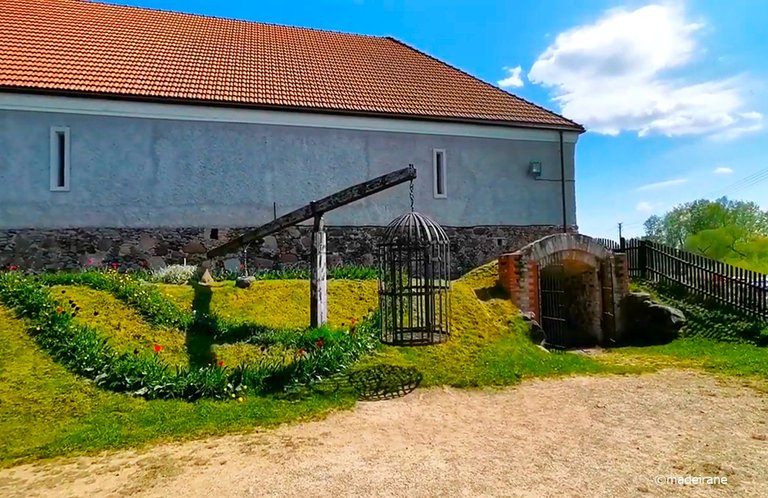
When we returned from Greece to our home, the thirst for travel and exploring new things became even more intense, so our family with the family of my sister went to Pakruojis Manor. This is the second time we go there, because this manor surprises its visitors with its show and the environment full of flowers and sculptures.
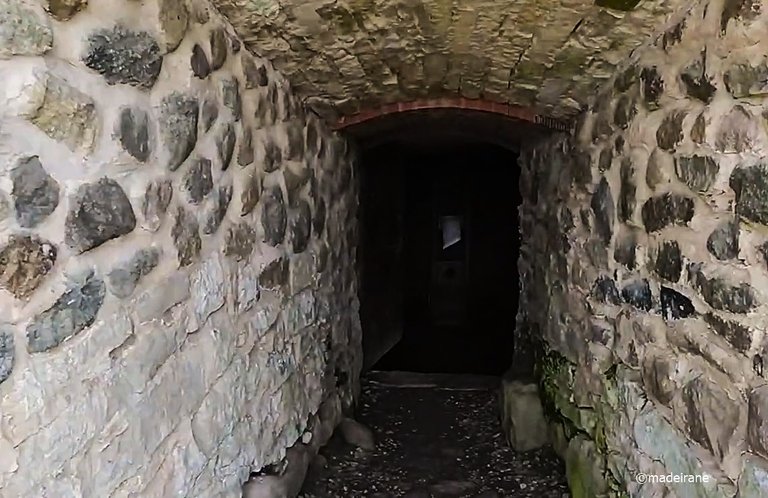
At the time we arrived, there was a show in the Torture Museum, which is found in the dungeons of the mansion. A bunch of curious people gathered in the century-old barn cellar, where the exposition of this museum is located. We were met there by scary darkness and some torture devices. But not only from the coolness of the dungeon, but also from the stories of the guide dressed as a landlord, shivers quickly began to run through the body.

Actually, I know enough about the Middle Ages and their torture devices, but still, it was interesting to her what he told us. According to the guide, almost all the exhibits - wooden fragments of torture devices - were found in the manor, where a building used to torture the lives of serfs stands. Sometimes, even for a minor offense, serfs caught there were tortured to death or crippled for life.
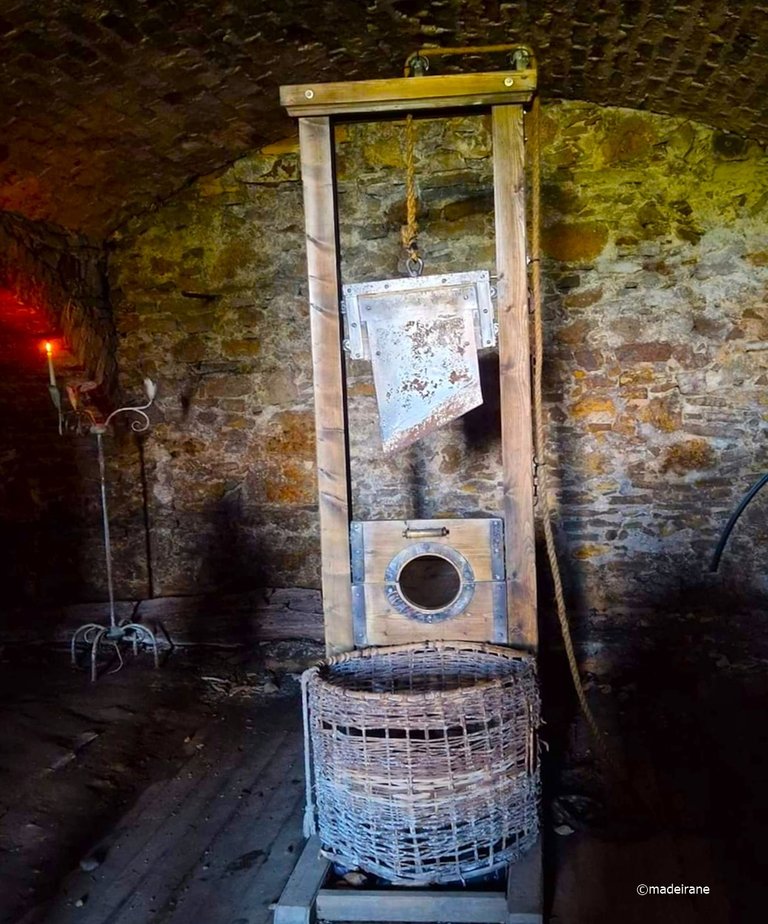
Here, a certain part of the history of the manors is shown, which is often kept silent. And indeed there are many interesting facts. In the manor, visitors can see the whole picture of life in the manor, from horse riding to what went on behind closed doors.
In those days, common human torture was one such topic of public silence. In the vaulted cellar of the barn of the manor, dimly lit copies of various devices used to torture people are lined up: Spanish shoe, Spanish goat, Judas' chair, punishment ties and others. And we were able to take a closer look at each of them, hear the principles of their operation.
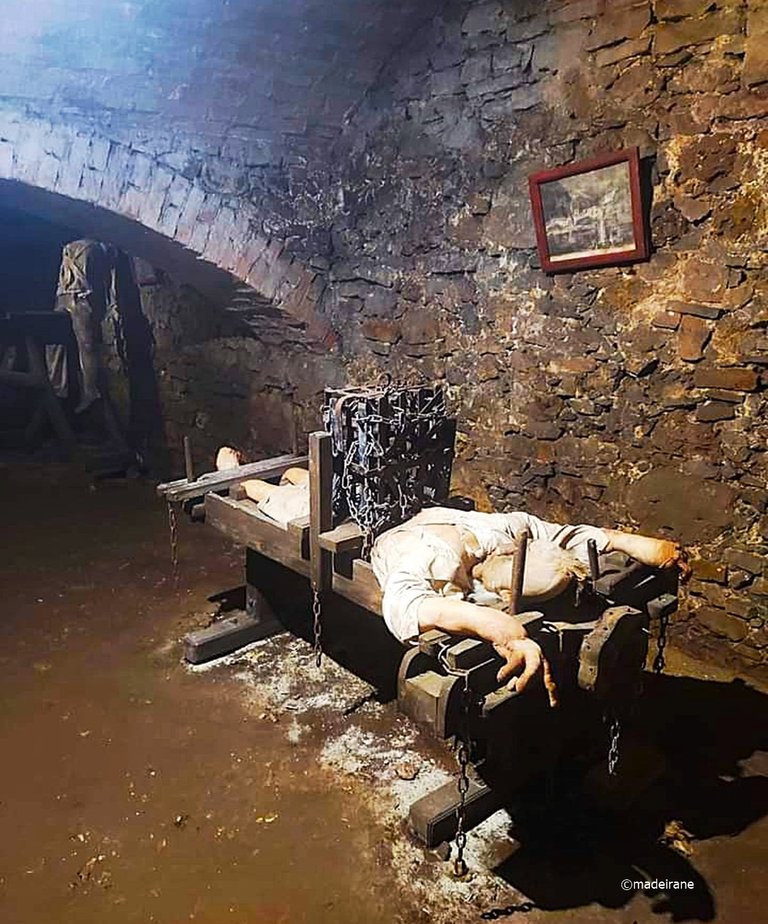
During the Middle Ages, and later during serfdom, every major European mansion had something similar to a torture chamber. There, servants and serfs were punished with physical punishment for various offenses. According to the guide, the serfs were mercilessly punished for the most diverse sins - for theft or laziness. Girls were punished for extramarital sex, unscrupulous men could lose their heads just for daring to look at the landlady.
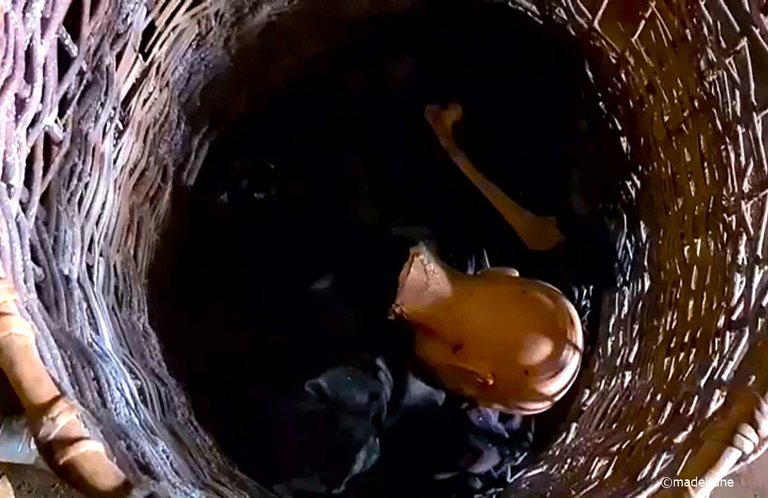
The rapist was also threatened with the death penalty in the manor - it was enough for a woman to state that she had been raped. True, only if it was done not by a noble person. If a noble person was accused of rape, he was found guilty only if there were witnesses who witnessed the act of rape, testifying that the victim shouted loudly and resisted, and there were signs of violence on the woman's body. However, the offending nobles were usually threatened not with physical punishment, but with humiliation of honor.

The representatives of blue blood were punished in the "tub of shame". The undressed nobleman was immersed up to his neck in a tub filled with feces. The executioner standing next to him flashed his sword and the offender was left with a choice - to shamefully dip his head in the stinking tub or meet death with dignity.
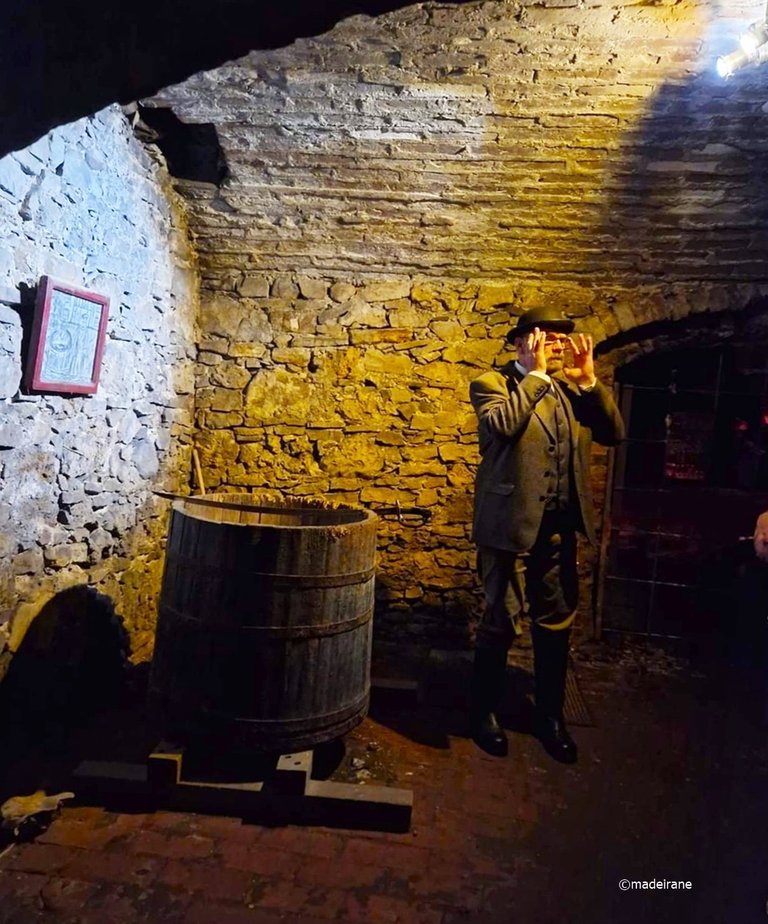
The punishments for ordinary people were much more severe. They often died or were crippled for life after torture. Joints of legs or arms were twisted, bones of feet or vertebrae of the neck were crushed with special equipment. When it turned out that a slave girl was pregnant with a child out of wedlock, she was placed on a special swing, with a sharp rod inserted into her stomach, until she miscarried. Usually, the woman herself did not survive such an execution.
Although punishments were given by aristocrats to their subordinates, criminals were usually punished by senior servants. However, some landlords see pleasure in torturing people themselves. One of the owners of the manor, the third baron Hermann von Ropp, was called cruel. This landlord was happy to play the role of executioner, especially if it was necessary to punish a woman or a child. During the reign of this aristocrat, the torture premises, where the show was going, were built. Most likely, it was deliberately placed away from the central palace of the manor, so that the screams and moans of the victims would not shock the more sensitive nobles. True, later Herman the Cruel wanted to buy a place in heaven and became the founder of the Pakruojis church.

The Museum of Torture is just one of the many attractions offered by Manor. After seeing the torture on an electric chair, we left the dungeon. An electric chair was brought from across the Atlantic. Such a chair was never used in Lithuania.
Actually, life in Manor was severe for ordinary people. And all the beauty of those old days faded considerably after visiting a torture museum.
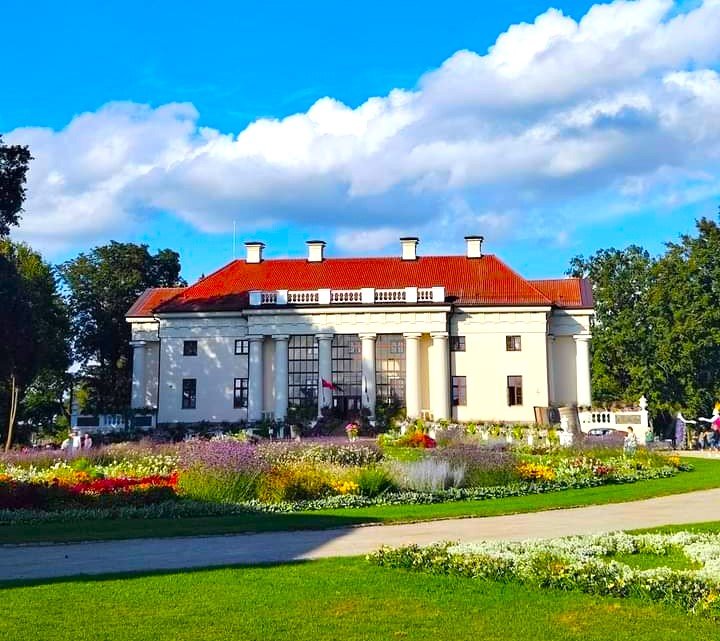
💝💝💝💝💝💝💝💝💝💝
With love @madeirane
Photos are taken by me.
© 2024
Translated from Lithuanian with DeepL.com (free version).
Kai grįžome iš Graikijos į savo namus, troškimas keliauti ir pažinti naujus dalykus tapo dar stipresnis, todėl mūsų šeima su sesers šeima išvyko į Pakruojo dvarą. Ten vykstame jau antrą kartą, nes šis dvaras lankytojus stebina savo parodomis, gėlių ir skulptūrų kupina aplinka.
Tuo metu, kai atvykome, vyko parodėlė Kankinimų muziejuje, kuris yra dvaro požemiuose. Šimtamečio tvarto rūsyje, kuriame įrengta šio muziejaus ekspozicija, susirinko būrys smalsuolių. Ten mus pasitiko bauginanti tamsa ir keletas kankinimo prietaisų. Tačiau ne tik nuo požemių vėsos, bet ir nuo dvarininku persirengusio gido pasakojimų per kūną greitai ėmė bėgti šiurpuliukai.
Tiesą sakant, aš pakankamai žinau apie viduramžius ir jų kankinimo įrenginius, bet vis tiek buvo įdomu, ką jis mums papasakojo. Pasak gido, beveik visi eksponatai - mediniai kankinimo prietaisų fragmentai - buvo rasti dvare, kur stovi pastatas, kuriame buvo kankinami vergai. Kartais, net ir už nedidelį nusižengimą, ten sugauti vergai būdavo kankinami iki mirties arba suluošinami visam gyvenimui.
Čia atskleidžiama tam tikra dvarų istorijos dalis, apie kurią dažnai nutylima. Ir iš tiesų yra daug įdomių faktų. Dvare lankytojai gali išvysti visą dvaro gyvenimo vaizdą - nuo jodinėjimo arkliais iki to, kas vyko už uždarų durų.
Tais laikais įprasti žmonių kankinimai buvo viena iš tokių viešai nutylėtų temų. Dvaro tvarto skliautuotame rūsyje išrikiuotos blausiai apšviestos įvairių žmonių kankinimui naudotų prietaisų kopijos: Ispaniškas batas, ispaniškas ožys, Judo kėdė, baudžiamasis raištis ir kt. Ir mes galėjome iš arčiau apžiūrėti kiekvieną iš jų, išgirsti jų veikimo principus.
Viduramžiais, o vėliau ir vergovės laikais kiekviename didesniame Europos dvare buvo kažkas panašaus į kankinimo kamerą. Jose tarnai ir vergai už įvairius nusižengimus buvo baudžiami fizinėmis bausmėmis. Pasak gido, vergai buvo negailestingai baudžiami už pačias įvairiausias nuodėmes - už vagystes ar tinginystę. Merginos buvo baudžiamos už nesantuokinius santykius, nesąžiningi vyrai galėjo netekti galvos vien už tai, kad drįso pažvelgti į šeimininkę.
Dvare prievartautojui taip pat grėsė mirties bausmė - moteriai užteko pareikšti, kad ji buvo išprievartauta. Tiesa, tik tuo atveju, jei tai padarė ne kilmingas asmuo. Jei išprievartavimu būdavo kaltinamas kilmingas asmuo, jis būdavo pripažįstamas kaltu tik tuo atveju, jei atsirasdavo išprievartavimą mačiusių liudininkų, kurie paliudydavo, kad auka garsiai šaukė ir priešinosi, o ant moters kūno buvo smurto žymių. Tačiau prasikaltusiems kilmingiesiems paprastai grėsė ne fizinė bausmė, o garbės pažeminimas.
Mėlynojo kraujo atstovai buvo baudžiami „gėdos kubile“. Nusirengęs bajoras iki kaklo būdavo panardinamas į išmatomis pripildytą kubilą. Šalia stovintis katorgininkas blykstelėdavo kalaviju, ir nusikaltėliui likdavo pasirinkti - gėdingai panardinti galvą į smirdantį kubilą arba oriai pasitikti mirtį.
Bausmės paprastiems žmonėms buvo daug griežtesnės. Dažnai jie mirdavo arba po kankinimų likdavo suluošinti visam gyvenimui. Kojų ar rankų sąnariai būdavo išsukami, pėdų kaulai ar kaklo slanksteliai sutraiškomi specialia įranga. Paaiškėjus, kad vergė laukiasi nesantuokinio vaiko, ji buvo sodinama ant specialių sūpynių su aštriu strypu, įkištu į pilvą, kol persileisdavo. Paprastai pati moteris tokios egzekucijos neišgyvendavo.
Nors bausmes pavaldiniams skirdavo aristokratai, nusikaltėlius paprastai bausdavo vyresnieji tarnautojai. Tačiau kai kurie žemvaldžiai malonumą kankinti žmones įžvelgdavo ir patys. Vienas iš dvaro savininkų, trečiasis baronas Hermanas fon Roppas, buvo vadinamas žiauriu. Šis dvarininkas mielai atlikdavo katorgininko vaidmenį, ypač jei reikėdavo nubausti moterį ar vaiką. Valdant šiam aristokratui buvo pastatytos kankinimų patalpos, kuriose dabar stebėjome pasirodymą. Greičiausiai ji sąmoningai buvo įrengta atokiau nuo centrinių dvaro rūmų, kad aukų riksmai ir dejonės nešokiruotų jautresnių didikų. Tiesa, vėliau Hermanas Žiaurusis norėjo išsipirkti vietą danguje ir tapo Pakruojo bažnyčios įkūrėju.
Kankinimų muziejus - tik viena iš daugelio dvaro siūlomų pramogų. Pamatę kankinimus elektros kėdėje, palikome požemius. Elektros kėdė buvo atvežta iš už Atlanto. Lietuvoje tokia kėdė niekada nebuvo naudojama.
Tiesą sakant, gyvenimas dvare paprastiems žmonėms buvo sunkus. Ir visas tų senų laikų grožis gerokai išblėso po apsilankymo kankinimų muziejuje.
Congratulations, your post has been added to WorldMapPin! 🎉
Did you know you have your own profile map?
And every post has their own map too!
Want to have your post on the map too?
🎉 Upvoted 🎉
👏 Keep Up the good work on Hive ♦️ 👏
❤️ @gamingphoto suggested sagarkothari88 to upvote your post ❤️
Such a cool but creepy manor!!!!😁